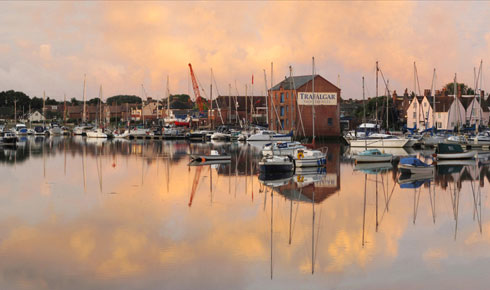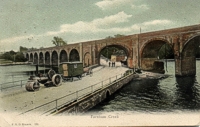Fareham's History
 Fareham's origins go back to a small settlement developed before Roman times around a crossing point of the River Wallington, close to the top of what is now High Street. The Romans came to the area in about AD43 and built a large fortress at Portchester to shelter their garrison and defend Portsmouth Harbour. Evidence of settlements in the Second Ice Age and Saxon times have been suggested by the discovery of flint arrowheads, knives and other implements at Hill Head. During the Iron Age, the Celts are believed to have used the River Meon as a harbour.
Fareham's origins go back to a small settlement developed before Roman times around a crossing point of the River Wallington, close to the top of what is now High Street. The Romans came to the area in about AD43 and built a large fortress at Portchester to shelter their garrison and defend Portsmouth Harbour. Evidence of settlements in the Second Ice Age and Saxon times have been suggested by the discovery of flint arrowheads, knives and other implements at Hill Head. During the Iron Age, the Celts are believed to have used the River Meon as a harbour.
The Domesday Book of 1086 showed that the present Borough of Fareham comprised of the 'Hundred of Ferneham' (Fareham), the 'Hundred of Ticefelle' (Titchfield) and the 'Manor of Porcestre' (Portchester).
 Impressive reminders of the past include Titchfield's medieval abbey with its links to Henry Wriothesley, the third Earl of Southampton, a patron of Shakespeare. Portchester Castle dates back to Roman times at the end of the third century.
Impressive reminders of the past include Titchfield's medieval abbey with its links to Henry Wriothesley, the third Earl of Southampton, a patron of Shakespeare. Portchester Castle dates back to Roman times at the end of the third century.
Other things of historic interest are:
